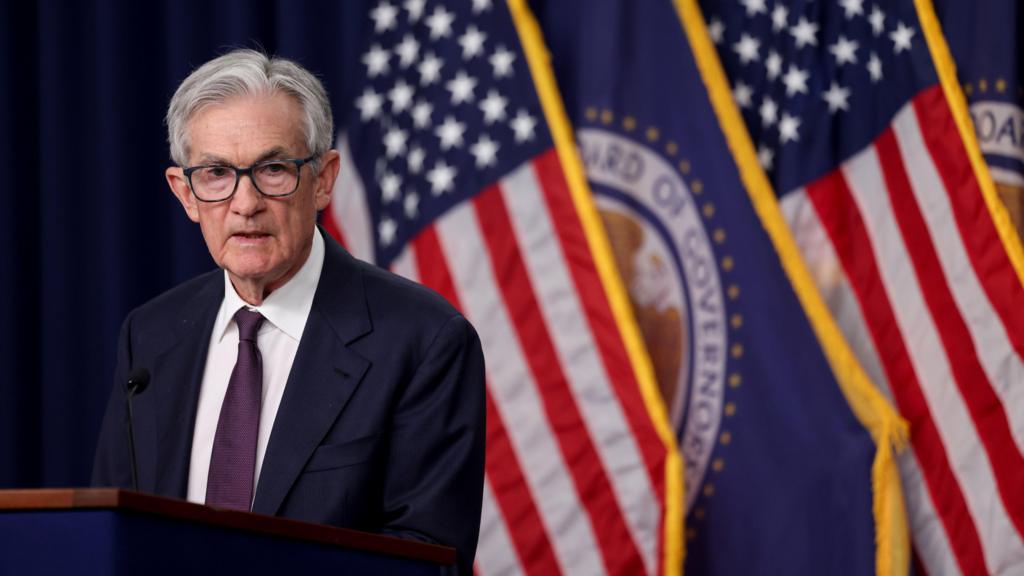Amidst recent significant policy shifts in the US, the Federal Reserve maintained its key interest rate unchanged at 4.3%, marking the fourth consecutive meeting without adjustment.
This decision comes despite revised economic forecasts indicating slower growth, increased unemployment, and faster inflation than previously projected. The Fed typically alters borrowing costs to counter economic struggles or rising inflation.
President Trump’s repeated calls for rate cuts, coupled with his sweeping economic policy changes, including increased tariffs, have created a complex economic landscape.
The Fed, independent of White House influence, expressed concerns that tariff-induced price hikes could lead to persistent inflation. May’s inflation rate of 2.4%, exceeding the Fed’s 2% target, further complicates the situation.
Federal Reserve Chairman Jerome Powell acknowledged the potential for faster price increases as businesses pass on tariff costs to consumers, stating that the impact is difficult to predict due to the tariffs’ magnitude and duration. This uncertainty, coupled with a “solid” economy and low unemployment (4.2%), informed the decision to maintain the current rate.
The Fed’s projections, however, reveal a more pessimistic outlook. Growth is expected to slow to 1.4% this year (down from 2.5% last year and 1.7% projected in March), with inflation rising to approximately 3% and unemployment reaching 4.5%.
While projections for interest rate cuts in 2025 remain largely unchanged, slightly higher rates are now anticipated for 2026 and 2027. President Trump, continuing his criticism of Chairman Powell, reiterated his disapproval of the Fed’s approach.
In contrast to the US, the European Central Bank has implemented eight rate cuts since June 2022, and the Bank of England recently lowered its rates. Isaac Stell of Wealth Club suggests that the Fed’s wait-and-see approach may have effectively countered President Trump’s pressure.
The Fed’s interest rate directly impacts interbank lending, significantly influencing borrowing costs for consumers and businesses through mortgage rates and other loans. While the current rate is higher than the 2008-2022 period, it remains approximately one percentage point lower than last year’s level.
Food prices continued their upward trend in May, contributing to an overall inflation rate of 3.4%.
Bank of England interest rates influence borrowing and savings rates for a large segment of the population.
UK inflation, while declining from record highs, still surpasses the Bank of England’s 2% target.
The following information is not directly related to the Federal Reserve’s decision and should be removed or replaced with relevant content.

